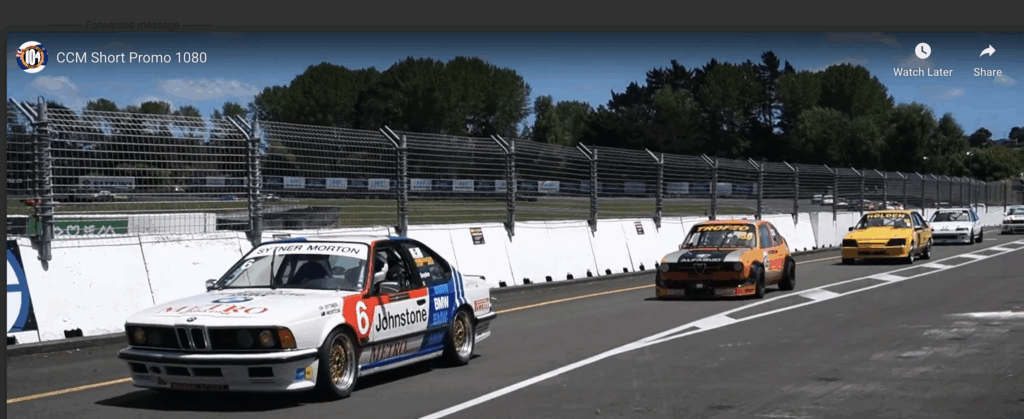
Short intro video of Classic Manfeild, 2025
Check out this taster video of Classic Manfeild 2025

Check out this taster video of Classic Manfeild 2025

Bill and Rae Denize have been active MG Car Club members in Wellington for nearly 32 years. They have held a variety of positions on the club committee, and now that they are both retired, they can be even more involved in the club’s activities. Bill is currently the president of the MG Car Club, Wellington Centre.
The list of cars they’ve owned over the years is testament to their passion for the brand. It includes a 1972 Midget — the round rear-wheel arch model with 1275cc motor; a three-door 2004 MG ZR; a 2005 MG ZR (five-door); and Rae’s 2005 MG TF, which they still own. Bill also raced a 1967 Morris Mini Cooper S at Manfeild for many years. That car featured in an article in the January 2013 issue of this magazine.
In April 2013, Bill sold the Cooper S and decided to buy a low mileage, freshly imported MG RV8 from Japan. He liked the idea as there were only 1983 built in the early 1990s, which, hopefully, would translate into these cars holding their value. More importantly, their bodies were galvanised, which meant fewer rust problems, although Bill and Rae didn’t escape encounters with oxidation unscathed.
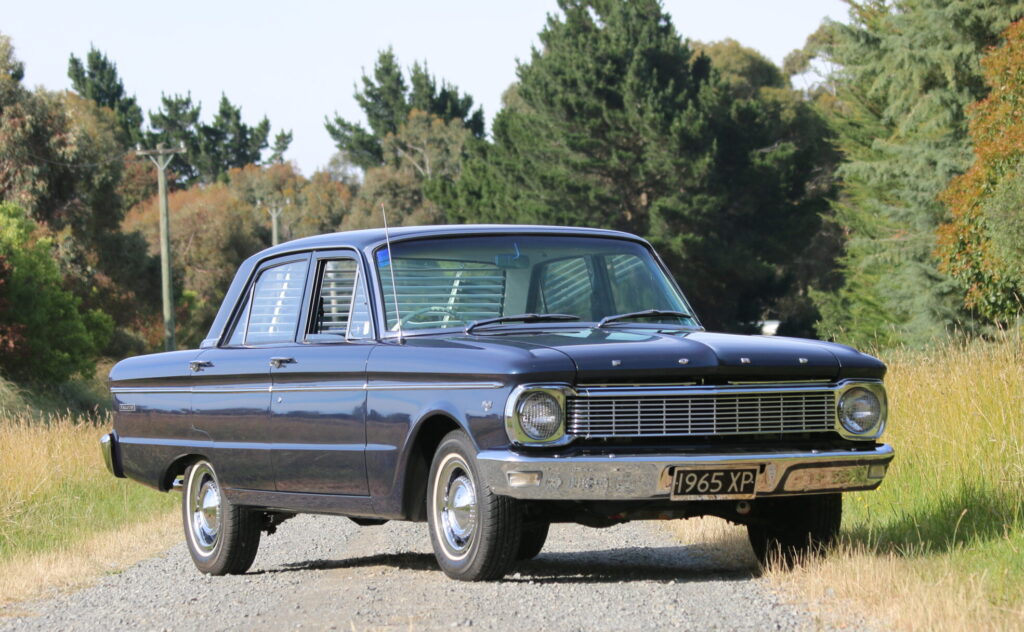
Well, at first glimpse, as soon as the lady opened the garage doors, I knew I was going to buy it. Dark metallic blue with two-tone blue vinyl trim, with a cream American-style steering wheel — I just could not believe my eyes! The Falcon was in as new condition as you could expect from a 30-year-old car. The owner was Mrs Iama Dzenis, aged in her late 60s, at a guess. Mrs Dzenis had bought the car new in September of 1965 from the Ford agents of North Canterbury, Palmer and Doak. Their headquarters were in Rangiora, with branches in Kaiapoi and Amberley.
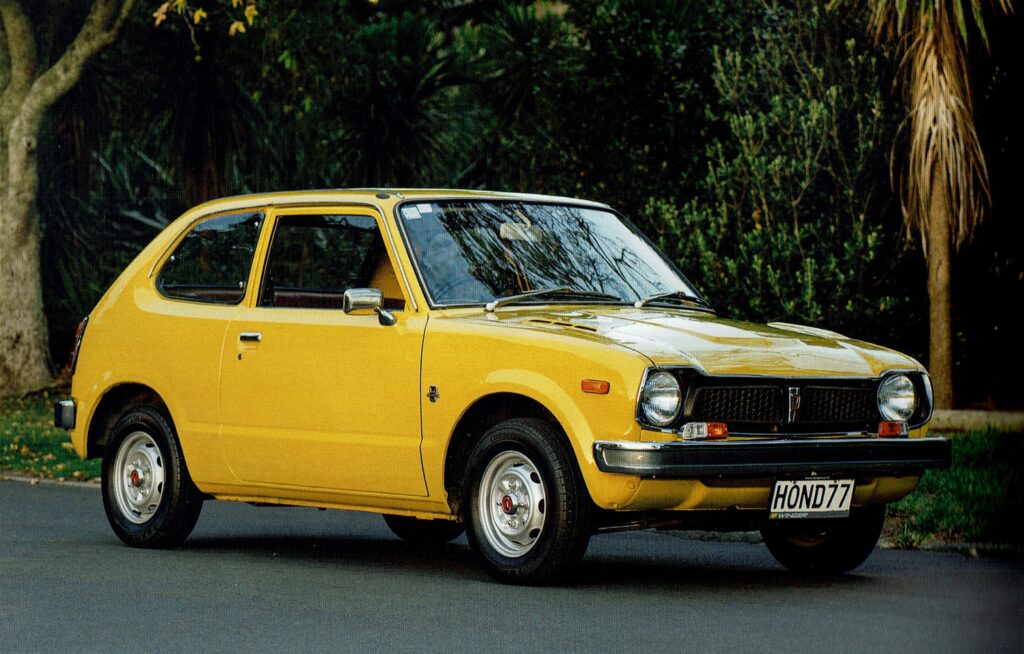
Japanese cars, and Hondas in particular, were about to flourish in New Zealand. This was the crux of the conversation I was having with Russell Moller, sitting in his Greenlane, Auckland, motor dealership early in 1973. Russell was particularly excited about the new Civic EB1 small car that had been unveiled in Japan the previous year.
I was about to leave on an extended stay in Britain. When I returned more than two years later, it was apparent Russell had called it right. Norton and Russell Moller had gained the licence to import fully built up Hondas, and formed Honda Pacific. A few highly prized Civics arrived before the New Zealand Motor Corporation (NZMC) assumed the franchise from the Moller Group. The corporation’s plans included building the EB1 at NZMC’s plant at Petone, near Wellington, and the first CKD (completely knocked down) Civic, a bright yellow example, rolled off the local assembly line in March 1976.
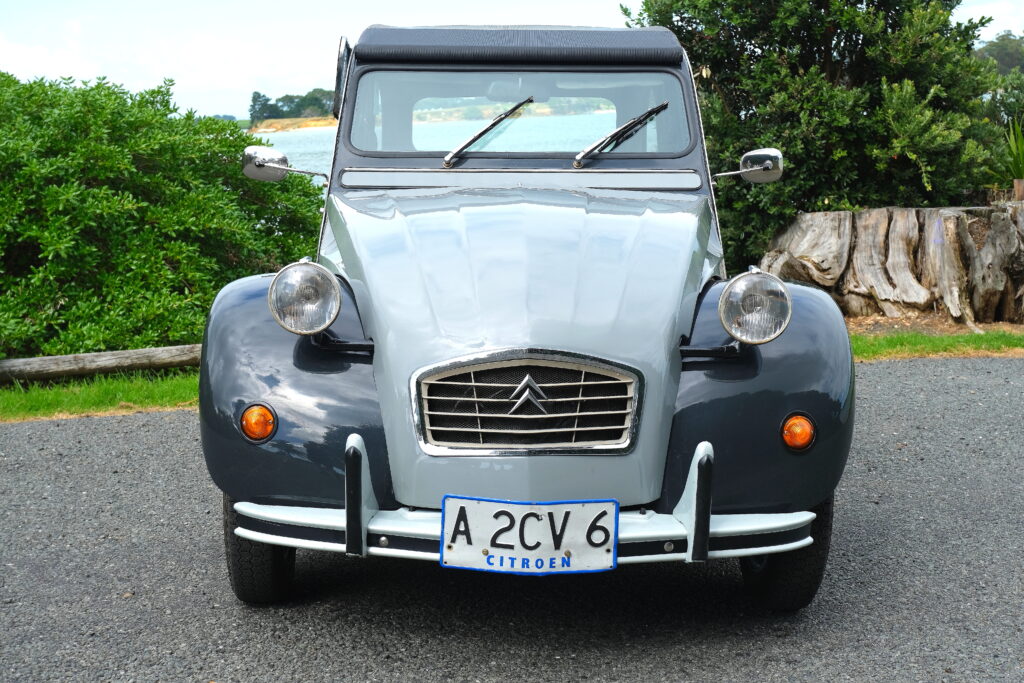
Kerry describes it as ‘a very simple car to do’. The suspension can be set to the required ride height. It is essential to weigh each corner to avoid too much weight difference from side to side. The four-speed gearbox was re-built. They are prone to getting a little water in them if not serviced correctly. Water etches into the bearings. The main shaft was also replaced.
But as it was a reasonably high mileage car, Kerry expected a few mechanical issues.
“The lady I bought it off owned it from 900km after it had been sold new to a gentleman in Palmerston North. He found he couldn’t fit into it. This woman in Hamilton bought it and she had run it to a total of 101,000kms. It was brand new in 1985 so it’s done quite a few kilometres for a little car.”
Not surprisingly, these little cars grow on their owners and the previous lady owner is now interested in buying it back.

Seeing the car with his own eyes already had Scott fizzing, but when the curator of the car let Scott sit in the driver’s seat it became a truly unforgettable day. There was no way Bo and Duke’s orange stunt jumper could compete with this. To top it off, a photograph of him sitting in the car turned up in the local paper, so he started a new school with an added aura as the kid in the Knight Rider car.
Scott still thought about the Knight Rider car from time to time, but if he had not gone with his wife Abbey to the Selwyn Motor Fest in 2018, it may have remained just a treasured memory. At the show, Abbey asked Scott what his favourite car was as they ambled round. The man she had married instantly connected with his nine-year-old self, but in a deeper voice he said, “KITT from Knight Rider”. Had she just said, “That’s nice dear,” and left it at that, life might have continued as normal. However, unaware of the hole she was about to start digging, she said that she had never heard of it.
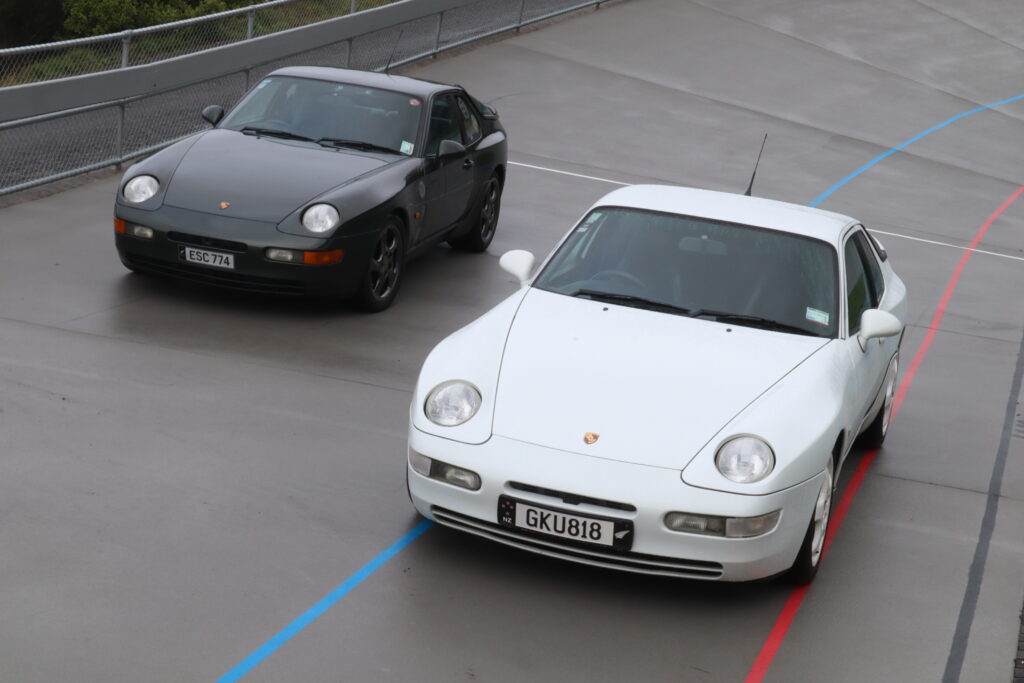
When you think Porsche, you will often think of the 911 or 356 — both rear-engine, both air-cooled (or at least until more recent times for the 911), and both icons of the sports car world. The 356 is very desirable, in hardtop coupe or in one of the three topless derivatives — speedster, roadster or cabriolet. Similar to larger car firms, Porsche experimented with a cheaper entry-level car for the keen but more modest income prospective purchasers so they could obtain their first foray into the brand.
Reaching back to their roots, Porsche collaborated with Volkswagen and released the mid-engine 914 in 1969. It sold in significant numbers in the USA, and was a modest success.
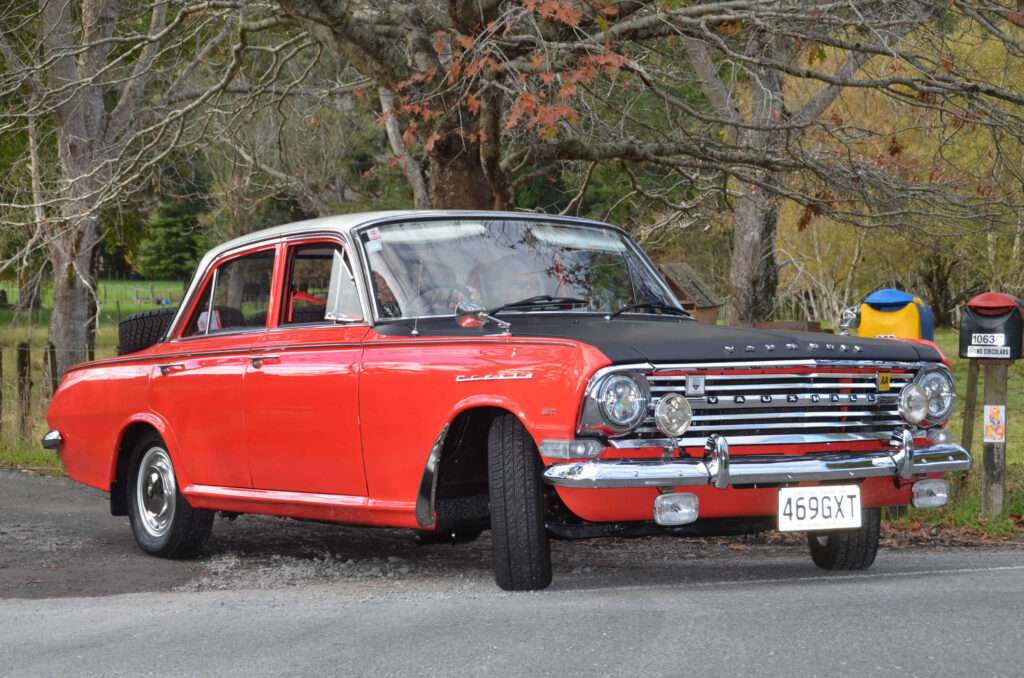
In November 2018, Howard Anderson had a dream of finding a 1964 Vauxhall PB Cresta to recreate the car he, his wife, Ruth, and three friends travelled in from London to Invercargill in 1969. The next night’s dream was a nightmare. He dreamed he would find the original Angela but it was a rusted wreck somewhere in Southland.
Howard’s inspiration came from reading about a driver in the 1968 London–Sydney Marathon who was reunited with his Vauxhall Ventora 50 years later. He, Ruth, and her parents had watched the start of the rally from Crystal Palace in South London. The fashion at the time among the rally and race set was to paint bonnets flat black to avoid the sun’s reflections flashing into the driver’s eyes, thus saving them from certain disaster. Howard admired the flat black bonnet on the Ventora so much he had Angela’s bonnet painted dull black.
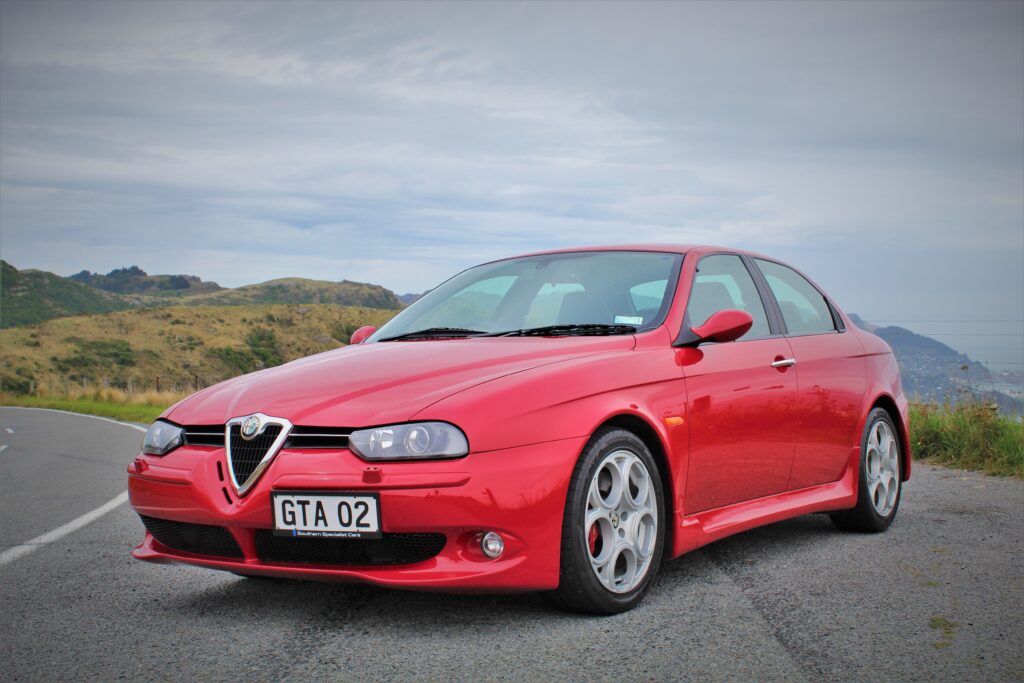
When it comes to discussing automotive brands with the habit of getting under your skin, the words Alfa Romeo will be among the first uttered. Alfa enthusiasts, or Alfisti to use the correct term, are some of the most passionate car enthusiasts around. They resonate with the brand’s rare talent for building cars with characterful engines, engaging handling, and beautiful lines at much less than exotic prices. This passion for Alfa’s vast automotive portfolio is only heightened when you mention the letters GTA.
An Alfa with a GTA badge has always been a very special thing. Standing for Gran Turismo Alleggerita, or Lightened Grand Tourer, it is always reserved for the models in Alfa’s range that champion power, light weight, and race car-like dynamics over just about everything else. From the early Series 105 Giulia GTA touring cars, to the latest limited run hardcore GTA rendition of the current Giulia Quadrifoglio saloon, it’s a nameplate with plenty of heritage.

I met Andrew Farrow in the little South Island town of Rangiora, where he introduced me to the then current version of his constantly changing car collection. He owns the Eyrewell Forest Motor Company. Not having a forecourt, his sales generally occur online where he buys and sells cars to add to his fluid collection. An example of what I mean by fluid is the F-Type Jaguar which he purchased recently and enjoys driving. It is advertised on his website and will eventually sell, at which point it will be replaced by another exotic he would like to own such as a Ferrari 599. Consequently, his collection is always in a state of flux, and he never has time to get bored with a particular car as another car will always be somewhere on the horizon.
I had gone to see one of the more permanent cars in his collection and one of his favourites, a McLaren M6GT replica. “It’s not the fastest or most expensive car here,” says Andrew, “but it does get the most attention.”
Anybody who knows about cars will instantly recognise this car as being a replica of the McLaren M6GT, conceived by Bruce McLaren as having the potential to be the first McLaren road-legal supercar, conceived decades before the McLaren F1.
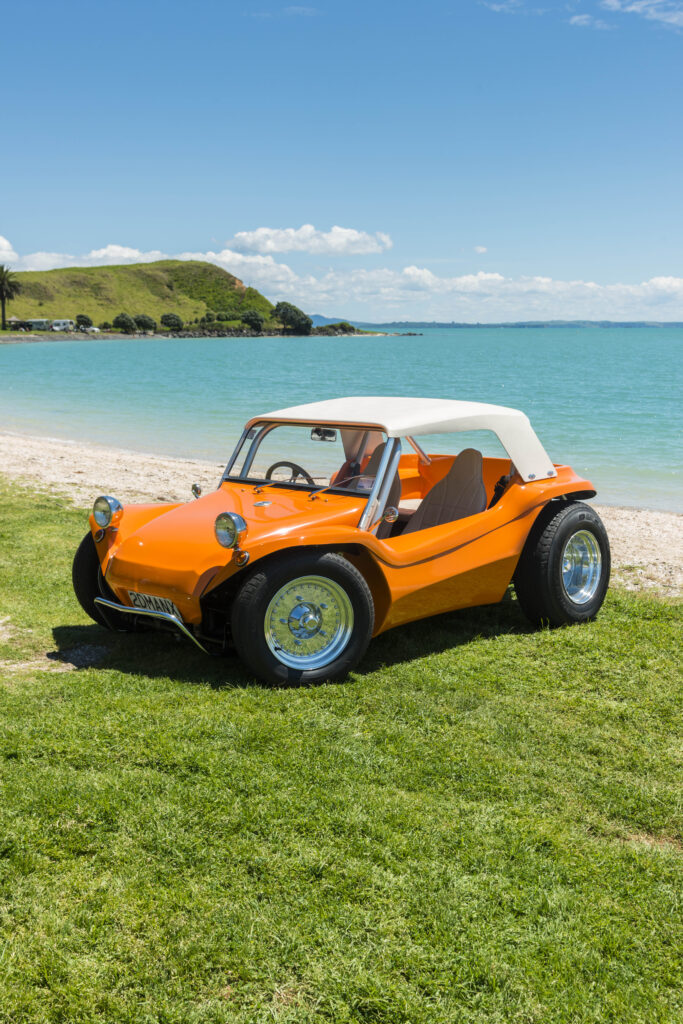
The dak-dak-dak of the beach buggy’s air-cooled engine spreads head-turning smiles wherever it goes. It has a timeless appeal but it also comes laden with more than a hint of nostalgia for the golden summers of youth, before ice creams — and suntans for that matter — became a guilty pleasure.
The boom time for the beach buggy was the 1960s. They were invented then but volume manufacture screeched to a halt in the 1970s. New car legislation in the US outlawed things like open wheels and exposed engines, but the owner of this classic example, Rob Schrickel, says small-scale manufacture has bubbled along happily ever since.
“They never really went away,” he says.
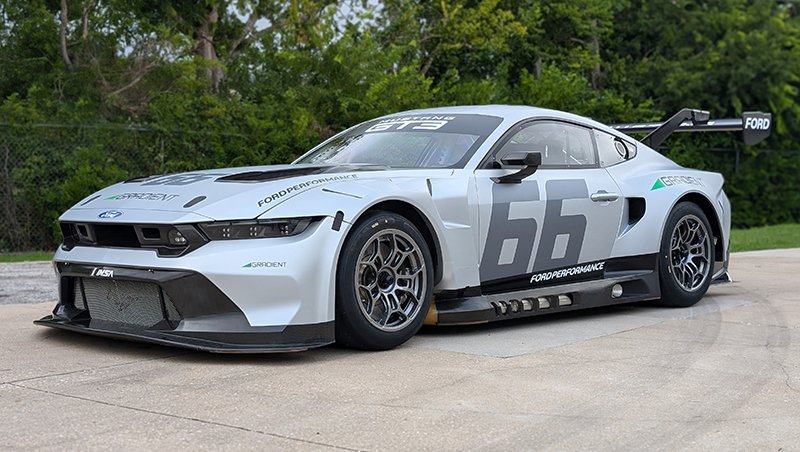
The Surgery is hosting a joint meet for the Wellington Corvette and Mustang groups this coming weekend, August 9.
The Surgery – NZ’s Top Classic Car Restoration Shop
Based in Tawa, Wellington, The Surgery is one of the country’s leading restoration workshops with over 35 years’ experience. Everything’s done in-house to concours standards using top materials and techniques. Professional, friendly, and trusted by classic car owners nationwide — including plenty of Corvette fans.
For more info or to arrange a visit for your car club, contact John Stevenson-Galvin at the Surgery, thesurgery.co.nz
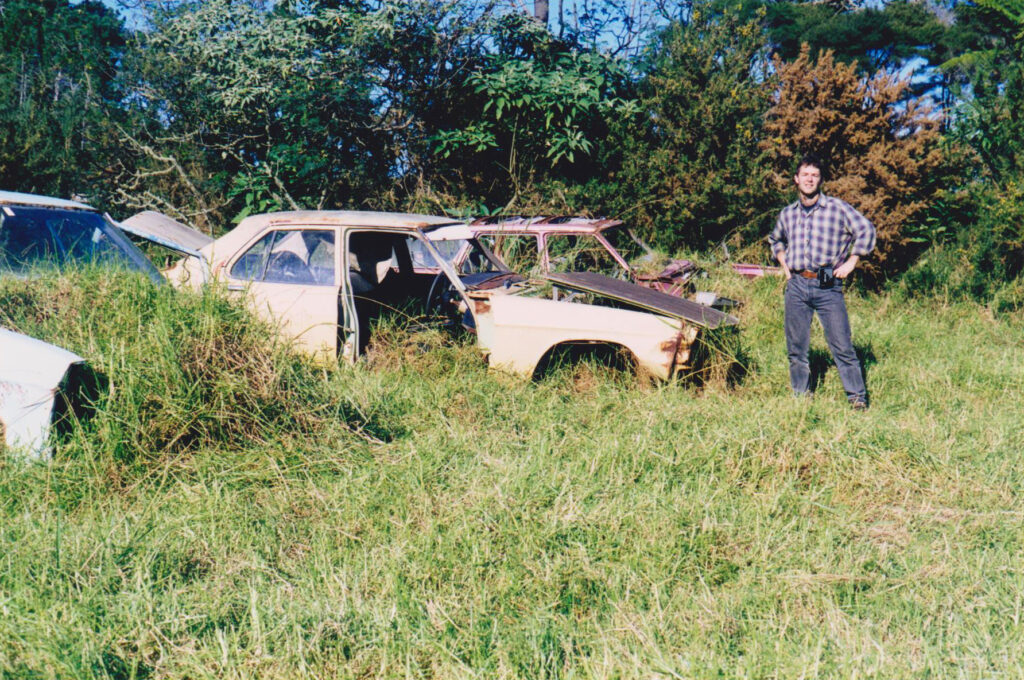
There’s been a proliferation of ‘barn find’ and ‘junkyard relic’ type books hitting the market, over the last 10 years or so. Writer Tom Cotter has been a major culprit with titles like Barn Find Road Trip, The Cobra in the Barn, Route 66 — Barn Find Road Trip and many others. In the same vein are: Lost Muscle Cars and a swath by Jerry Heasley, such as Jerry Heasley’s Rare Finds: Mustangs and Fords. They are almost exclusively American titles.
It got me thinking of all the road trips I’d charted around this country over 40 plus years hunting out and photographing what I thought of as roadside jewels — diamonds in the rough if you like, captured in all their glory, ensnared by time and weeds out in the back blocks. Interestingly, most of those cars have disappeared with the passage of yet more time.
Mulling on this point prompted me to go through scenes that had captivated me over 45 years on the road, an epitaph of sorts of earlier times, when these cars arrived at their final resting spot. I’d also capture those on their last legs, supposedly still operational and snapped curbside. I’ll also include a few snaps from my overseas junkets in Cuba, Buenos Aires and other locales.
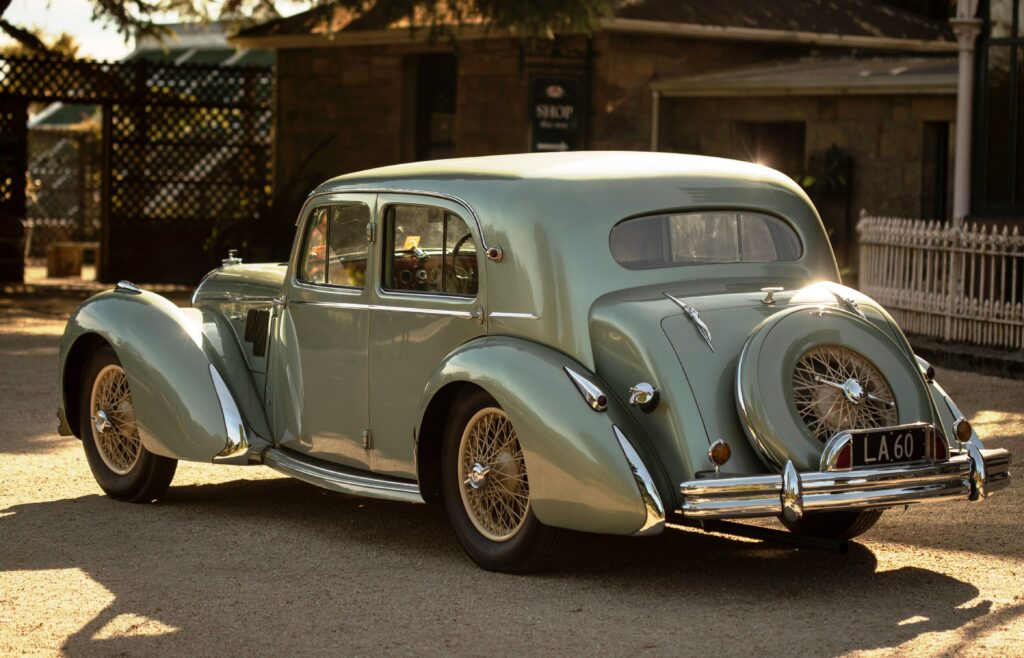
Sitting in Paddy and Patsy Williams’ Dunedin garage is a stunning example of one of these rare French grand routier sedans. It is a 1949 four-door Lago-Record Factory Berline sedan, to give its full name. Daughter Cath let us know how proud she was of her dad, who had been tinkering away in his garage on this car for so many years.
Without exaggeration, it has been a mammoth task. I first saw this Talbot-Lago in mid 2019. The long-nosed, sweeping, curved four-door saloon, clothed in its misty green metallic paint, was quite breathtaking. There’s more than a little English influence in it, too, harking back to company owner Tony Lago’s involvement in the Clement-Talbot-Darracq era. The long front wings and bonnet, usually multi-louvred, highlighted with artful touches of chrome bling, are typical of the era, but these were indeed luxury length. Interiors provided leather-clad, armchair-style seating and ample legroom, with touches of wood and surprising details such as dainty childproof interior locks — a far cry from today’s lozenge boxes.
Paddy, a retired civil and structural engineer, knows his way around a lathe. He has a well-equipped garage-workshop to assist in any machining tasks along with his other passion for restoring classic motorcycles.
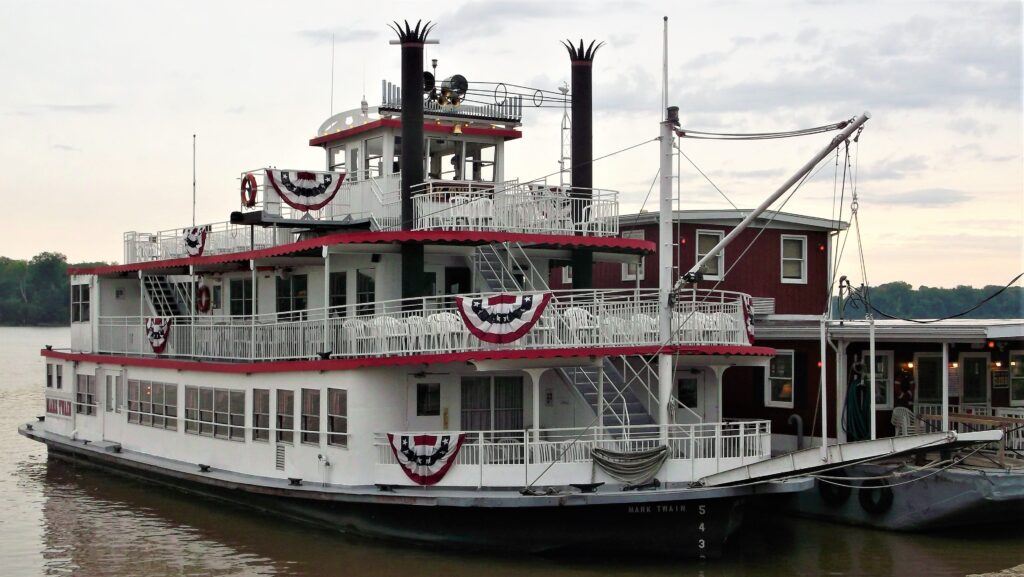
A few years ago my family, knowing my fondness for driving, gave me the book Unforgettable Road Trips: Thirty-Six Drives of a Lifetime by Martin Derrick. Most of the road trips listed take less than a day in places like Scotland, Monaco, and Australia, plus one in New Zealand. Most of these places were too far to go just for a short drive but four of them would take several days. My interest was piqued, and those four drives were added to the bucket list. To date, I have done three of them: ‘Route 66’ (USA 21 days), ‘State Highway 6’ (NZ 10 days) and ‘The Great River Road’ (USA 22 days). You can drive all of them in less time, but you could also fly over them. We wanted a decent immersion in their charms.
The great river referred to is the Mississippi. While the name conjures the deep south, the river actually starts at the bottom of the great lakes, before emptying into the Gulf of Mexico about 3800km later. The great road is more of a concept than a specific strip of tarmac, as you can drive down either side of the river on various routes. Regardless of which side you drive, time should be kept aside for detours to places such as Nashville, which is famous for something or other.